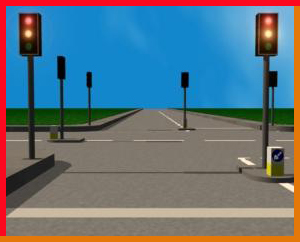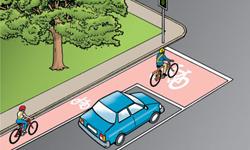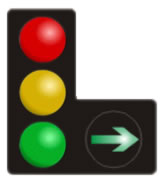Traffic Lights Sequence Explained

Green: continue ahead.
You may continue ahead but only if the way forward is clear.

Amber: stop at the stop line
You can only pass through an amber light if you have already crossed the stop line or are so close to it that stopping might cause an accident.

Red: stop and wait behind the stop line.

Red and Amber: Stop at the stop line. Do not pass through until green shows.
Traffic Light Failure
When a set of traffic lights have failed to work you should treat the junction as an uncontrolled junction – one where no one has priority. In such a case, you should be prepared to stop and give way.
Advanced Stop Lines

Some traffic light-controlled junctions have advanced stop lines. These allow cyclists, and sometimes buses, to wait ahead of all other traffic, usually in an area marked by a different coloured road surface.
All other traffic must wait behind the first stop line and should avoid waiting in the marked area.
When the traffic light turns green, traffic waiting at the first stop line should be patient and allow time and space for the cyclists or buses to move off.
Approaching Traffic Lights
- Red – stop and wait at the stop line.
- Red and amber – stop and wait.
- Green – go if the way ahead is clear.
- Amber – stop, unless
- you’ve already crossed the stop line
- you’re so close to it that pulling up might cause an accident.
Filter Traffic Lights

Filter lights indicate that you have priority in the direction shown by the arrow (see image right, which indicates a right filter lane). They may be timed to control traffic congestion at busy times. The arrow may indicate a priority to the left, right, or ahead.
At a left filter traffic light, when the arrow comes on, you may turn left regardless of any other lights that may be showing. Before turning, check for other traffic moving in from your right.
At a right filter traffic light, when the arrow comes on, you may turn right regardless of any other lights that may be showing. Check that there is no oncoming traffic before you proceed.
On your driving the test the examiner will expect you to:
- Use the MSM/PSL routines as you approach
- Get to the correct lane
- Stop when required to do so
- Move off when required to do so.
